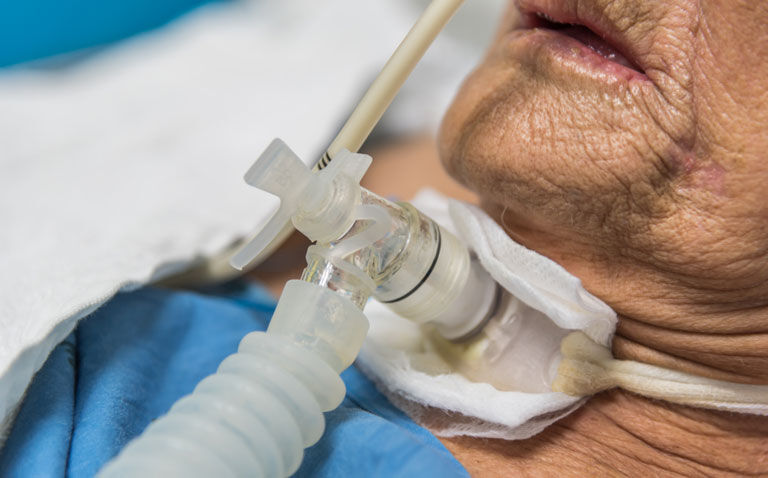Early tracheostomy among critically ill patients within an intensive care unit is associated with a lower level of hospital mortality
The use of early tracheostomy compared to later use has been found to be associated with a lower risk of hospital mortality according to the results of a retrospective analysis by a team from the Department of Anesthesiology and Intensive Care Medicine, Osaka University Graduate School of Medicine, Osaka, Japan.
Tracheostomy is a procedure undertaken among critically ill patients requiring prolonged mechanical ventilation for acute respiratory failure and for airway issues.
Whilst the procedure enables patients to breathe in cases where their airway is blocked, taking someone off mechanical ventilation (often referred to as ‘weaning’) can take a considerable amount of time and prolonged weaning has been associated with several adverse outcomes including with a trend toward a higher rate of re-intubation, a significantly longer length of stay and higher mortality in the intensive care unit.
Whether it is best to perform an early tracheostomy or carry out the procedure later tracheostomy has been the subject of much debate over the years, particularly in relation to adverse effects including ventilator-associated pneumonia (VAP), ventilator days, mortality and the length of intensive care unit (ICU) stay.
One review concluded that early tracheotomy seems to be associated with a lower incidence of VAP, shorter duration of mechanical ventilation, shorter duration of sedation, and shorter ICU stay.
However, the definition of the timing for tracheostomy in studies has been found to vary e.g., 2 – 10 days, 6 – 29 days, hence it can be difficult to ascertain the association between tracheostomy timing and mortality. As a result, for the present retrospective study, the Japanese team, examined the outcomes for adult patients admitted to an ICU who underwent tracheostomy.
The study was designed to improve the quality of patient care and they set the primary outcome as hospital mortality with ICU mortality as a secondary outcome. The team divided the timing of tracheostomy into quartiles; Q1 = < 6 days; Q2 = 7 – 10 days, Q3 = 11 – 14 days and Q4 was > 14 days.
Early tracheostomy and patient mortality
A total of 1,538 patients with a mean age of 70 years (for all four groups) were included in the analysis. The proportion of male patients ranged from 63.5 to 69.1% in the different groups.
For the primary outcome, there was a progressive increase from Q1 to Q4, eg., mortality was 17.7% in Q1 but 32.4% in Q4. Using Q1 as the reference group, the adjusted odds ratio (aOR) for hospital mortality increased from 1.52 (95% CI 1.08 – 2.13) in Q2 to 2.26 (95% CI 1.61 – 3.16) in Q4. There was a similar trend for ICU mortality which increased from 1.25 (Q2) to 4.57 (Q5).
The authors also found that both the length of ICU (27.5 vs 7.2 days, Q4 vs Q1) and hospital stay (78 vs 51 days, Q4 vs Q1, p < 0.001 in both cases) was significantly longer in Q4 compared to Q1.
They concluded on how there was a stepwise increase in mortality and which increased with the timing of tracheostomy, highlighting the importance of an early tracheostomy in critically ill patients.
Citation
Tanaka A et al. Association between early tracheostomy and patient outcomes in critically ill patients on mechanical ventilation: a multicenter cohort study J Intensive Care 2022










